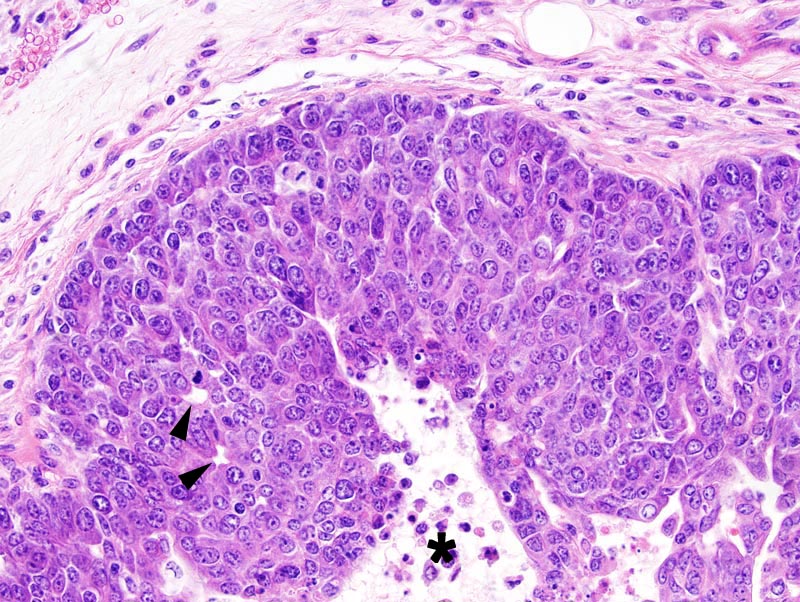Caption |
Solid/comedo mammary carcinoma: neoplastic cells form large solid areas with central cavitation (*). As exemplified in this photomicrograph, central cavitation sometimes was the result of single cell necrosis and exfoliation rather than massive necrosis. This type of central cavitation is reminiscent of lumen formation at the vicinity of terminal end buds of the pubertal mammary gland. Minute secondary lumens are present (arrowheads). |
Description |
Adenocarcinoma, solid, trabecular, mammary gland |
Age at Necropsy |
364 days |
Notes |
This tumor is not typical of a tumor arising in a mouse transgenic for Wnt1. The genotype of this mouse was checked thrice. Mice transgenic for Wnt1 generally develop type P mammary tumors that are characterized by the formation of structures resembling terminal end buds and ducts, as well as prominent myoepithelial differentiation. All these features are missing from this neoplasm. |
Contributor |
Churchill GA (J:112750) |
Pathologist |
Mikaelian I (J:94320) |
Method |
H&E |
